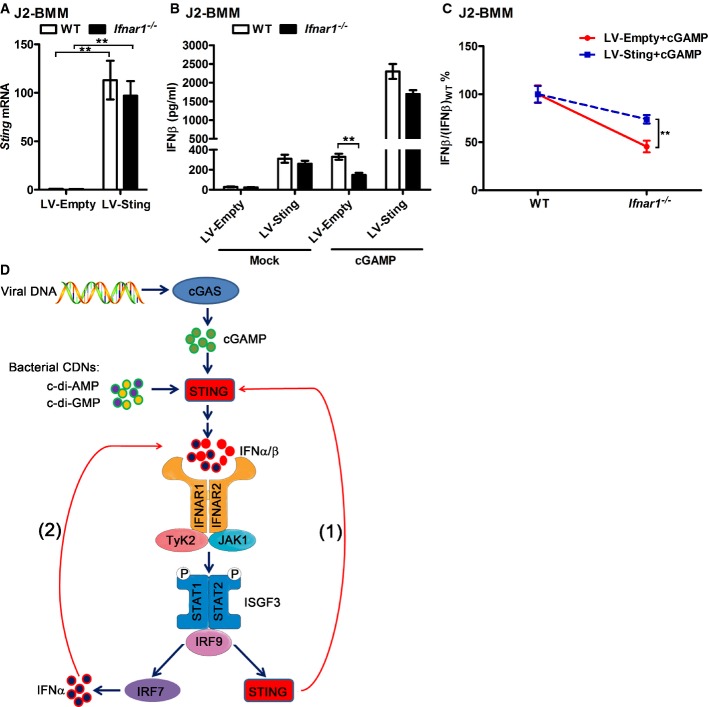Figure 5.
- WT and Ifnar1−/− J2-BMMs were transduced with empty or Sting-expressing lentivirus (LV-Empty or LV-Sting) for 3 days. StingmRNA was detected by qPCR.
- WT and Ifnar1−/− J2-BMMs were transduced with LV-Empty or LV-Sting for 3 days; then, the medium was replaced and the cells were left untreated or transfected with 3 μg/ml cGAMP for another 16 h. IFNβ in the supernatant of these cells was measured by ELISA.
- J2-BMMs were treated and induction of IFNβ was measured as described in (B). IFN-β/(IFN-β)WT in percent was calculated and compared for LV-Empty- and LV-STING-transduced cGAMP-activated cells.
- Induction of STING plays a role in the positive feedback loop of CDNs-triggered IFN-I production. Viral DNA such as HSV and HIV DNA is recognized and converted into cGAMP by cGAS. Bacteria such as Listeria monocytogenes and Mycobacterium tuberculosis can produce the other CDNs, for example, c-di-AMP and c-di-GMP. These CDNs are recognized by STING and trigger the STING–TBK1–IRF3 signaling axis to produce the first wave of IFN-I. Initial production of IFN-I induces the IFN-stimulated gene, STING, via the IFNAR signaling, which further amplifies the CDNs recognition and the IFN-I production, as shown in step (1). In addition, induction of transcription factor IRF7 by first wave IFN-I drives the production of multiple IFNα, which mediates the further induction of STING and IFNα at the later stage, as shown in step (2).
Data information: Data of (A–C) are from three independent experiments (mean ± s.e.m.), **P < 0.01 (Student's t-test).

